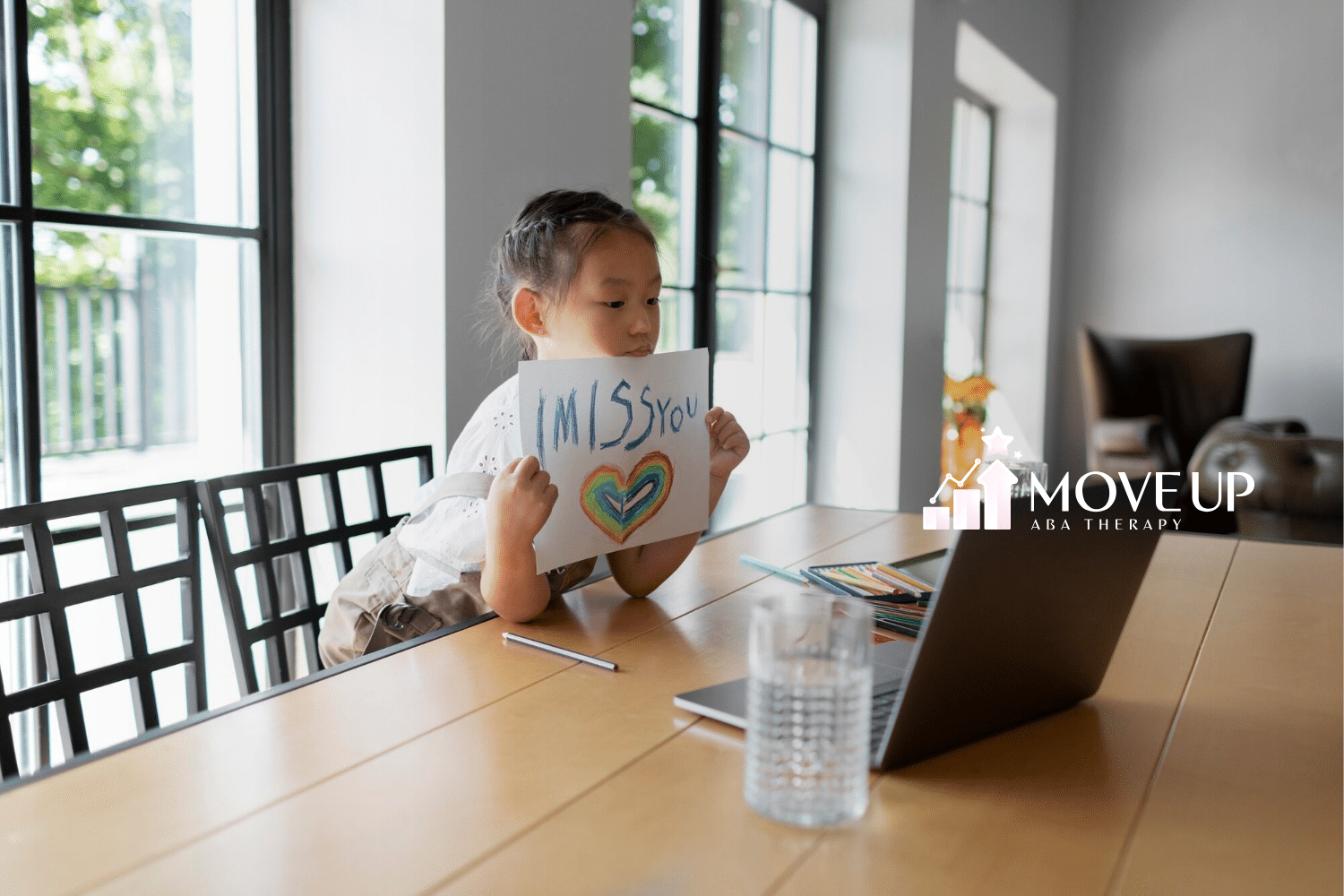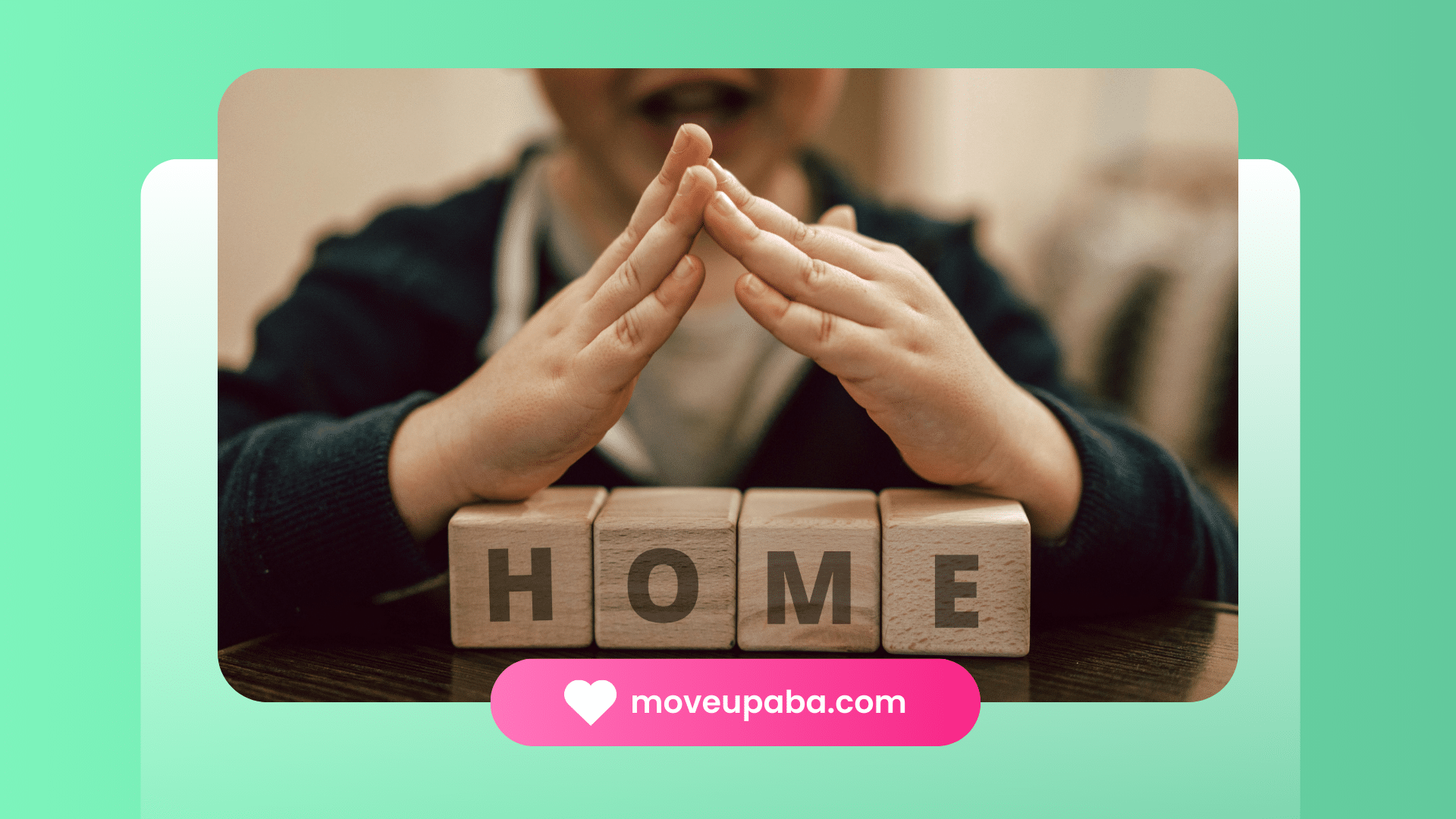For families with children on the autism spectrum, choosing the right place for ABA therapy can be tricky. Home-based ABA therapy is one option that stands out. It makes the therapy more personal and fits better into the child’s daily life. This type of therapy also helps get the family involved, which makes it effective. This article will help you create an effective schedule for home-based ABA therapy.
Understanding the Basics of ABA Therapy for Home Use
Applied Behavior Analysis (ABA) therapy is a well-known and trusted method for helping those with autism spectrum disorder (ASD). This therapy is based on behavior analysis ideas. It looks at how people learn behaviors and how we can change them.
In simple terms, ABA therapy supports good behaviors and tries to lessen those that make learning or social interaction hard. Therapists use certain methods and plans. Their goal is to help people with ASD build important skills, gain independence, and improve their overall quality of life.
The Importance of ABA Therapy in Autism Spectrum Disorder
ABA therapy is very helpful for people with autism spectrum disorder. It focuses on understanding and changing behavior. Autism is a complex condition that affects how a person communicates, interacts socially, and behaves.
ABA therapy breaks down skills into smaller steps. This way, individuals with ASD can learn new behaviors and skills step by step. It also uses positive reinforcement. This means rewarding good behaviors to help encourage and motivate learning.
This therapy is more than just fixing bad behaviors. It teaches important life skills like communication, self-care, and social interaction. These skills help individuals thrive in different parts of life.
Key Principles of ABA Therapy for Effective Learning
Effective ABA therapy depends on key principles that shape its execution. These principles ensure that the therapy is customized, effective, and aimed at improving behavior.
First, having clear goals is very important. Before starting therapy, therapists meet with families to find out specific skills or behaviors that need help. These goals act as targets and direct the creation of personalized plans.
Second, positive reinforcement is a key part of ABA therapy. Instead of punishing, therapists and caregivers use rewards and praise to encourage and strengthen good behaviors. This method creates a supportive and motivating learning environment for the person.
Tailoring ABA Therapy to Individual Needs at Home
One big advantage of home-based ABA therapy is that it can be personalized for each child. This means therapy sessions can be fun, effective, and aimed at the child’s goals.
Home-based ABA therapy is different from standard programs. It lets therapists change their methods based on how the child responds and improves. This flexibility is important for creating a learning space that suits the child’s strengths and challenges.
Assessing Your Child’s Specific Goals and Challenges
Before you start scheduling, it’s important to know your child’s needs and your family’s goals for therapy. Start by figuring out what specific skills you want your child to learn or improve. These skills can include communication, social interaction, self-care, and daily living tasks.
Think about what your child can do now and the challenges they face. Does your child have trouble communicating, feel overwhelmed by senses, or show certain behaviors? Understanding these challenges helps therapists create plans that fit your child’s unique needs.
Keep in mind that every child is different. What works for one child may not work for another. That’s why it is essential to have a thorough assessment and keep talking with your ABA therapist to build and improve a successful therapy plan.
Customizing Therapy Sessions for Maximum Engagement
Once you know what your child needs and wants, it is time to plan fun and helpful therapy sessions. Family involvement is very important for this. Parents and caregivers can share great ideas about what your child likes, what motivates them, and how they learn best.
When therapists include these ideas in the therapy sessions, it can make learning more fun and interesting for the child. For example, if your child loves cars, the therapist could use those toys to teach about colors or counting.
Keep in mind that therapy shouldn’t feel like hard work. Help the therapist create fun and interactive sessions by using games, activities, and rewards that match your child’s interests. A playful approach to learning can really boost your child’s motivation and engagement.
Crafting a Structured Yet Flexible Home Therapy Schedule
Flexibility is a big plus of home-based ABA therapy. However, keeping a regular schedule is very important for success. Kids with autism spectrum disorder usually do best in organized settings. A regular therapy schedule gives them stability, which can improve their learning.
Talk to your ABA therapist to decide how often and how long the therapy sessions should be. Try to keep the timing of these sessions the same. This helps the child get ready and move into therapy mode easily.
The Role of Routine in ABA Success
Routines are very important for success in ABA therapy. They offer a safe space for kids to learn and practice new skills. When children know what will happen and when they feel safer and more involved in therapy.
You can start by adding therapy to daily routines. Instead of seeing it as something separate, mix ABA techniques into everyday tasks like eating, bathing, or playing.
It’s also important to be consistent in therapy. Help everyone caring for the child to use the same ABA principles and techniques. This consistency reinforces learning and helps make a supportive environment for the child.
Strategies for Integrating Therapy Within Daily Routines
Integrating ABA therapy into daily routines is about looking for chances to encourage learning in everyday life. By practising new skills during daily activities, children can use these skills in different places and situations.
Here are some ways to easily mix therapy into everyday life:
- Mealtimes: Use mealtimes to practice communication skills, like asking for favorite foods or sharing what they like.
- Bath Time: Make bath time fun with sensory activities. This can include following instructions or naming body parts.
- Playtime: Play with toys and games to work on specific skills like taking turns, sharing, and creative play.
Always try to find fun ways to make therapy a regular part of the child’s day. This helps learning continue beyond just therapy sessions.
Engaging Family Members in the Therapy Process
Family members are very important for making home-based ABA therapy successful. When they are involved and understand how the therapy works, they help create a supportive environment. This really helps the child make progress.
When family members take part in the therapy, they learn helpful techniques and strategies. This helps them support their child’s growth not just during therapy, but also in everyday life. Keeping this up is key. It helps reinforce learning and makes ABA therapy even more effective.
Training and Support for Parents and Siblings
Effective home-based ABA therapy is about more than just the therapist and the child. It also needs families to have the knowledge and skills to keep using therapy methods outside of therapy sessions. This is why family training is so important.
Therapists usually train parents, siblings, and other caregivers. They give them a basic understanding of ABA therapy and teach them to use specific methods.
Open communication plays a key role in the therapy process. Family members should feel free to ask questions, share what they see, and express any concerns. This teamwork makes sure everyone works together toward the child’s goals.
Encouraging Positive Interactions and Support Networks
While therapy sessions help kids learn skills in a planned way, it’s just as important to create positive interactions and support networks outside of therapy. Encourage your child to spend time with siblings, family, and friends in meaningful ways.
These moments are great chances for them to practice social skills, make friends, and gain confidence in real-life situations. Don’t forget that positive reinforcement is very important. Celebrate your child’s successes, no matter how small, and recognize their efforts and improvements.
Building a strong support network for your child and the family is also crucial. Connect with other families who are in similar situations, join support groups, or ask for help from your ABA provider.
Overcoming Common Home-Based ABA Therapy Challenges
Home-based ABA therapy has many benefits, but it also has some challenges. Unexpected events or distractions at home can happen, and you might also face difficulties with behavior management. It’s important to be ready for these issues and to have plans to deal with them.
To help open communication is key between the family and the therapist. Make sure to talk about any problems, challenges, or surprises that come up. This way, you can change the therapy plan or develop new strategies to handle those situations.
Navigating Scheduling Conflicts and Time Management
One big challenge families face with home-based therapy is dealing with scheduling issues. Things like work, school, and activities can make finding time for therapy feel hard.
Start by talking openly with your ABA provider about your family’s schedule. Share any possible issues you might have. Together, you can come up with smart scheduling ideas that won’t disrupt anyone’s daily routine.
Keep in mind that effective therapy sessions don’t always need to be long. Short and focused sessions can also be very helpful if done regularly. Look for times in your day when your child is awake and interested, and use those moments well.
Techniques for Adapting to Unexpected Changes
Unexpected events are a part of life, and it’s crucial to maintain flexibility in your ABA therapy plan. Illness, changes in routine, or unforeseen circumstances can disrupt even the most well-crafted schedules. The key is to adapt and adjust your approach as needed.
Keep a few backup activities or reinforcers on hand that you can use when unexpected changes occur. This might involve having a favorite toy, book, or sensory activity to help redirect your child’s attention and minimize disruptions to the therapy session.
Maintaining open communication with your ABA therapist is crucial during these times. Inform them of any changes or challenges you’re facing, and be prepared to adjust the therapy plan or session schedule as needed to meet your child’s evolving needs.
| Potential Changes | Adaptation Strategies |
| Illness | Shorten sessions, focus on preferred activities, prioritize rest |
| Travel | Incorporate therapy into travel routines, pack familiar reinforcers, and maintain communication with the therapist |
| Changes in routine | Prepare the child in advance using visual schedules, provide extra support during transitions, adjust session timing |
Utilizing Technology and Online Resources in ABA Therapy
In today’s world, technology and online resources can greatly improve ABA therapy services. There are interactive apps made to teach specific skills. There are also online communities for parents and therapists that can help make home-based ABA therapy more effective.
Digital platforms can help families and therapists communicate easily. Tools like shared calendars, messaging apps, and video calls are useful for coordinating schedules. They also help in sharing updates on progress and solving any concerns.
Digital Tools and Apps for Enhancing Learning
Technology has created new and exciting opportunities in ABA therapy, especially for skill acquisition. Interactive apps and digital tools can be very engaging for children. They make learning fun and keep kids motivated.
Many apps focus on different skills. These include communication, language development, social skills, and daily living skills. These apps often use visual aids, games, and positive reinforcement. This helps keep children interested and encourages them to make progress.
When choosing digital tools for your child, think about what they like and how they learn best. Also, make sure the apps come from trusted developers who understand ABA therapy principles.
Online Support Communities for Families and Therapists
The journey of ABA therapy can sometimes feel lonely, especially for families trying it for the first time. Connecting with other families, therapists, and professionals online can be a great source of support. You can find shared experiences and helpful advice.
Online support groups allow families to meet others who understand their ups and downs. These groups often share resources, tips, and encouragement, helping everyone feel understood.
Online groups offer therapists a chance for professional growth. They can work together and keep up with the latest research and best practices in ABA therapy.
Measuring Progress and Adjusting Strategies
Monitoring progress is very important in home-based ABA therapy. It helps make sure that the interventions are working and fit your child’s needs. Always keep track of your child’s progress on their therapy goals. You can do this by noting down their successes and any challenges they face.
If you see that your child is not improving as hoped, talk to your ABA therapist about it. You can work together to change the therapy strategies, look at other options, or review the treatment plan to make sure it matches your child’s current needs better.
Setting Realistic Goals and Celebrating Milestones
Setting real goals is very important. It helps keep motivation high and allows for celebrating progress in therapy. While it’s natural to want big things for your child, break those big goals down into smaller steps that they can actually achieve.
This method makes the therapy process feel easier, and it gives more chances to notice and celebrate your child’s successes. Keep in mind that progress in ABA therapy doesn’t always go up smoothly.
There will be good times and bad times and moments when things slow down. Enjoy the journey, try to focus on the positive changes, and remember that even the small steps matter a lot in your child’s overall development.
When to Adapt Your Approach for Better Outcomes
One important part of good ABA therapy is its ability to change. Children’s needs can change over time. This means you may need to make adjustments for the therapy to keep working well.
If your current plan isn’t producing the results you want, consider trying new strategies. You might revisit the therapy goals, change the frequency or length of the sessions, or use new techniques that fit your child’s needs.
Keep in mind that ABA therapy is a personal journey. What helps one child might not help another. Stay flexible, watch closely, and talk regularly with your ABA therapist. This way, you can make sure the therapy plan matches your child’s individual needs and helps them feel good.
Conclusion
In conclusion, scheduling ABA therapy at home must carefully balance structure and flexibility. It should fit the individual needs of each child. By mixing therapy into daily routines and involving family members, the process can be more rewarding and lasting. Facing challenges, using technology, and keeping track of progress are important for success. Giving steady support, training, and a positive atmosphere helps children with ASD grow and develop. Celebrating milestones and changing strategies as needed creates a path for ongoing progress and a hopeful future for your child. Be patient and dedicated on this journey.
Frequently Asked Questions
What is the Recommended Frequency for Home-Based ABA Sessions?
The number of home-based ABA sessions you should plan depends on your child’s needs and what your ABA provider suggests. Most therapy schedules offer between 10 and 40 hours each week, breaking into several sessions. It is very important to keep the therapy schedule consistent. This helps to make the therapy work better for your child.
How Can I Make ABA Therapy Fun and Engaging at Home?
Embrace a personalized approach in therapy sessions by including your child’s interests. Use their favorite toys, games, or activities to help them learn and stay motivated. Keep the atmosphere positive with praise and rewards. Also, remember that family involvement can make therapy more fun and increase engagement.
SOURCES:
https://www.parents.com/positive-reinforcement-examples-8619283
https://www.webmd.com/mental-health/what-is-applied-behavior-analysis
https://www.waterford.org/blog/activities-for-children-with-autism/





